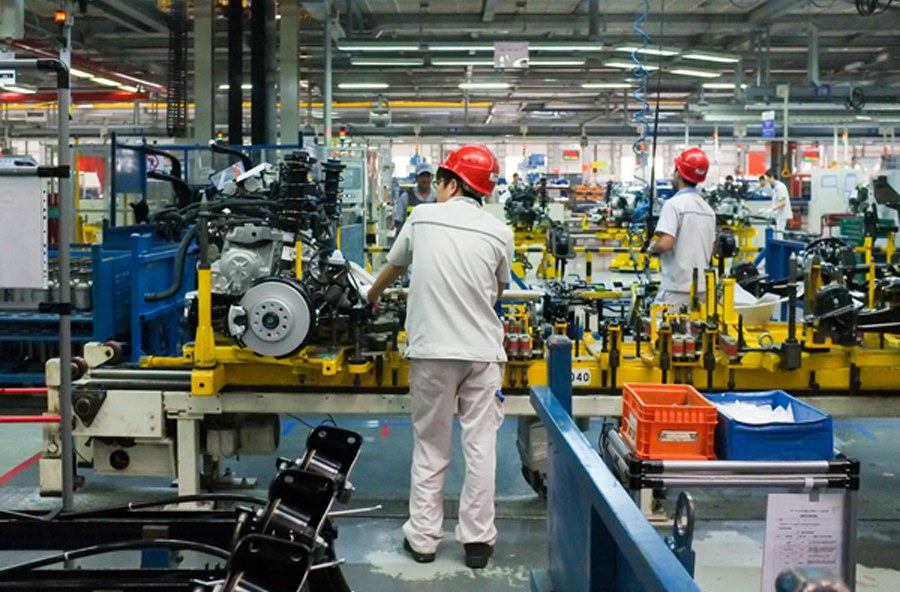
(The opinions expressed here are those of the author, Clyde Russell, a columnist for Reuters.)![]()
The slump in China’s main manufacturing sentiment index has yet to be fully reflected in prices for key metals, which remain well above levels seen during previous bouts of weakness in the industrial sector of the world’s second-largest economy.
It was the second straight month for the index below the 50 mark separating growth from contraction, and the soft outcome came amid a series of coronavirus lockdowns in major cities, including Shanghai.
There are also worries that China’s strict zero-covid policy means more cities will be locked down, including the capital Beijing, with restrictions lasting for longer than the market had initially expected.
The ongoing lockdowns will make it more challenging for China to meet its 5.5% economic growth target for 2022, especially since the current quarter appears likely to be weak, with some economists saying a negative gross domestic product number is a possibility.
With China’s economic worries stacking up, it is perhaps surprising that prices of some key industrial metals haven’t retreated more.
No major commodity depends more on Chinese demand than iron ore – almost 70% of global seaborne volumes are shipped to the world’s biggest buyer.
The spot price of benchmark 62% iron ore for delivery to north China, as assessed by commodity price reporting agency Argus, ended at $146.50 a tonne on April 29, admittedly before the weekend release of the PMI data.
It has dropped 8.5% from the peak so far this year of $160.30 a tonne on March 8, reached in the wake of Russia’s attack on Ukraine, which prior to the invasion had been the fourth-biggest shipper of iron ore.
But iron ore is still well above $105.95 a tonne – the price prevailing in October, 2021, when China’s PMI last dropped below the 50 level.
It is also significantly higher than the $83.15 a tonne from February 2020, when China’s PMI plunged as the initial wave of the coronavirus pandemic hit economic activity.
When China’s PMI was below 50 in February 2019, the iron ore price was $84.70 a tonne, and when the PMI was at 49 points in February 2016, spot iron ore was at $48.65.
There are other factors that drive iron ore prices beside the relative strength of China’s manufacturing sector, but some of these are also looking fairly bearish, namely infrastructure and construction spending.
Iron ore inventories at Chinese ports rose to 149 million tonnes in the week to April 29 from 148.6 million the prior week. While this down from the 2022 peak of 160.95 million tonnes in mid-February it is well above the 133.1 million tonnes in the same week in 2021 and the 117.95 million at the end of April 2020.
The current high level of inventories suggest steel mills will have little incentive to buy additional iron ore, especially given the still strong spot prices. Instead they may be inclined to bet that prices will decline in line with the current weak activity, rather than hold up in anticipation of still to be delivered stimulus.
Copper holding up
Like iron ore, copper prices have remained elevated relative to the weakness in China’s PMIs.
China produces about half of global refined copper and is the world’s largest importer of the metal.
Benchmark London copper ended at $9,769.50 a tonne on April 30, down 8.5% from the record closing high of $10.674 on March 4.

However, the contract is still well above the prices that prevailed when China’s PMI has dipped into negative territory in recent years.
For example, when China’s PMI slumped to 35.7 in February 2020, copper was at $5,635 a tonne, and it was at $6,509 in February 2019, and $4,695 in February 2016.
It may be the case that iron ore and copper are trading more on the expectation of a massive stimulus programme by Beijing in the second half of the year.
Certainly, China’s Communist Party leadership is trying to get across the message that the economy will be supported. When the Politburo met on April 30, it pledged support for industries hit by Covid-19 lockdowns, and to boost work on infrastructure and supply chains.
What is lacking is details on what stimulus measures will be implemented, their size and how quickly they will be delivered.
Until this becomes clearer, it seems that iron ore and copper may currently be priced more for the hope of upcoming stimulus than for the current signs of sagging industrial activity.
(Editing by Simon Cameron-Moore)
No comments:
Post a Comment